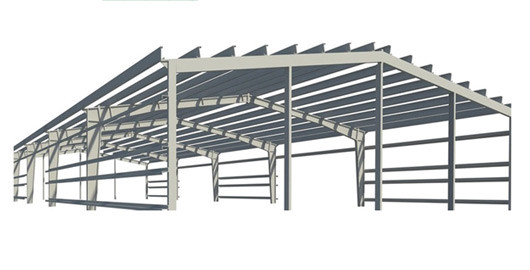Pre-engineered Buildings vs Conventional Buildings
Are pre-engineered buildings better than conventional buildings? This can be debated endlessly with no clear winner, which means it’s up to you to decide which type of building works best for your needs.
We have written about what PEB is, and what are their key benefits in our previous blogs. In this blog, we will help you learn about the pros and cons of both PEB and conventional buildings so you can make the right choice for your construction project.
Pre Engineered Buildings
Pre-engineered buildings are built mostly in steel and are factory-made, shipped to the site and bolted together. The advantage of pre-engineered buildings lies in their customization, but they also come with some other benefits such as their durability, cost-effectiveness and faster construction time.
Conventional Buildings
Meanwhile, conventional buildings are traditional buildings consisting of steel, brick and cement as the major building components. The conventional building method involves welding and cutting, which is done largely at the construction sites. A conventional building is designed from scratch, requiring substantial design inputs and detailing of the intricacies done by engineers and consultants.
Every type of building has its own advantages and disadvantages. However, it is possible to compare a pre-engineered building with conventional buildings in many aspects.
| Property | PEB | Conventional Buildings | ||
| Design | Design of Pre-engineered buildings is efficient due to its integral framing system. | Design of conventional buildings takes more time and it offers fewer precision design aids | ||
| Foundations | Since the structural weight is low, a lightweight foundation with simple design is enough. | Heavy structural weight makes it difficult to design the foundation. The foundation must be very heavy enough to bear the loads. | ||
| Delivery Speed | Faster delivery. It takes 6 to 8 weeks to construct a 500 MT pre-engineered building after the finalization of design. | Very slow delivery. It takes 20 to 26 weeks to construct 500 MT conventional building after the finalization of design | ||
| Cost of Construction | Price per square meter is 30% less than the cost of conventional building. | Price per square meter is very much higher. | ||
| Seismic Resistance | These buildings offer good resistance against seismic actions since they are made of lightweight flexible members. | These cannot withstand seismic forces because of their rigid heavy frames. | ||
| Architecture | Impressive architectural options are available at low costs. | More research and time is needed. Cost will also increase. | ||
| Future Expansion of Building | It is easy to expand the pre-engineered building because of its simple connection design. | It requires a heavy budget and also difficult to expand the building. | ||
| Performance | Maximum efficiency can be achieved since all the components are designed specially to act together as a system. | Components are designed individually and hence there is no guarantee about the performance of structure. | ||
| Responsibility | Only one supplier took the responsibility of the whole project which is good for minimizing construction risks. | Multiple suppliers took the responsibilities and issues like insufficient materials, different quality components, etc. may arise |
Despite pre-engineered buildings being significantly more expensive, they are usually seen as better value because of their longevity and efficiency in construction. It’s vital to get an independent report done before making any decisions, but if you’re looking for a quick turnaround and exceptional durability from your structure, then prefabricated buildings are a good choice.

